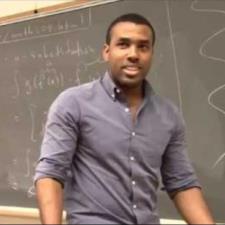
Jhevon S. answered • 11/11/19
Mathematics Tutor
We are told we have independence here. If A and B are independent events, then P(A and B) = P(A)*P(B).
Note that "at most one" means "less than or equal to one", so you want the probability of the following events:
(a) player A misses AND player B misses.
(b) player A hits the center AND player B misses.
(c) player A misses AND player B hits the center.
(I was very suggestive with the use of "and").
These situations do not overlap, so the probability of (a) or (b) or (c) happening is just the sum of the individual probabilities. Figure those out, add them and you're done.
Can you continue?




